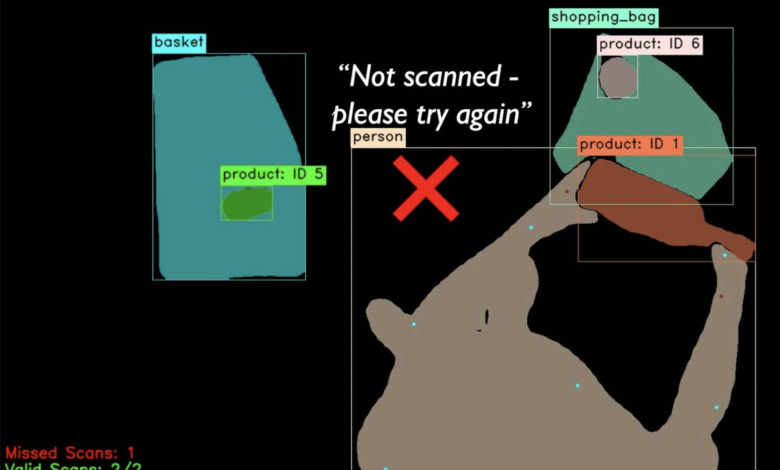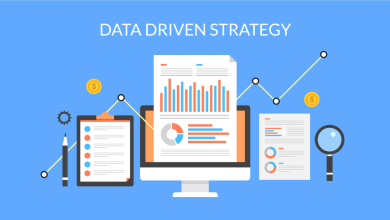
Retail shrink – the loss of inventory due to various factors – has become a major concern for the retail industry. In the US, shrink ballooned to a staggering $112 billion in 2023, up from $61.7 billion just three years prior. In the UK, retail crime cost retailers £3.3 billion in 2022.
While there are unavoidable reasons for shrinkage, like product damage and expired items, a significant portion is preventable. The key is in identifying where and how it occurs and taking appropriate steps to stop it in a cost-effective, frictionless way. This challenge is a particular pain point for grocery retail, with razor-thin margins; inflation; and a cost-of-living crisis tightening consumer spending power.
Factor into the mix the retail industry’s recruitment and retention problem: the industry sees between 50% and 75% employee turnover. The result: understaffed stores and overworked employees. That translates into customers facing more friction points throughout their purchase journey, which detracts from the in-store experience, prompting them to shop elsewhere.
Traditional security methods have limitations
Historically, retailers have relied on methods like security cameras and guards to combat shrink. However, these methods have limitations. Security guards can’t be everywhere at once, and only a fraction of CCTV footage ever gets reviewed by human eyes. Plus, these methods are prone to human error and bias.
In addition, security guards may rotate between different stores and companies, losing the opportunity to recognize behavior patterns early enough to proactively react in real-time.
The rise of self-checkout and a new challenge
Self-checkout was introduced to streamline the shopping experience, circumvent the retail labor shortage, and reduce costs. However, it too has become a contributor to shrink.
Self-checkout convenience creates opportunities for theft, both deliberate and accidental, yet retailers are in the dark about the specific methods used and the true extent of losses. A recent survey found that one in five shoppers believes they have stolen from a self-checkout accidentally, while one in seven admits to intentionally stealing from the machines.
The difficulty of monitoring creates a challenge for retailers who are eager to embrace self-checkout benefits while effectively minimizing shrink.
Why vision AI is the answer
Vision AI, also referred to as ‘computer vision’, applies artificial intelligence (AI) for the ability to analyze what is seen in video and still images and translate this into actions, providing guidance and alerts as necessary.
While self-checkout offers clear benefits to retailers and customers who like the technology, it can create blindspots for traditional loss prevention methods. This is where vision AI comes in.
By leveraging cameras in the self-checkouts, vision AI can automate the image analysis of shopping behavior and identify opportunities to prevent and recover losses. This provides retailers the opportunity to drastically reduce shink. Here are some of the benefits:
- Understanding shrink: AI can analyze data to identify patterns and pinpoint exactly where shrink is happening in the store. This empowers retailers to tailor solutions to their specific environment, providing security personnel with real-time actions to take and proactively prevent losses.
- Smoother self-checkout: AI can identify mis-scans and prompt customers to correct them, reducing the need for employee intervention. As a result, wait times are shorter, and customer satisfaction increases. Most importantly, it also reduces shrinkage.
- Happier employees: With AI automating routine tasks at self-checkout, employees are freed up to focus on higher-value activities, like providing exceptional customer service.
- Data-driven decisions: AI provides valuable insights into customer behavior and shopping patterns, enabling retailers to optimize staffing levels, predict peak times, and make data-driven decisions to further reduce shrink.
AI is not about replacing people
AI enhances the teams it supports and should be viewed as a collaborative team member helping to improve efficiencies and effectiveness. Employees can be directed to higher priority tasks and deployed to areas based on real-time needs, while at a top level, it simultaneously enables leaders to drill down into the details of what happens in each store and create effective strategies for preventing loss. With data-driven insights into physical retail locations, reporting happens in real time, not retrospectively, and allows retailers to be proactive in loss prevention strategies.
The future of retail is connected
For vision AI to reach its full potential, it has to go beyond siloed deployments that resolve a specific problem, such as the identification of fresh produce at weighing scales. A connected AI system that unifies the whole store – from aisles and shelves to checkouts and exits – offers retailers a full-color picture of their entire operation.
With a connected store system capable of predicting and identifying new scenarios, retailers not only understand what is happening now, but they also gain the power to recognize new patterns and behaviors and deploy new models that enable them to get ahead of the next ‘new’ type of shrink.
This connected retail operation unlocks potential far beyond preventing shrink just at checkout. It offers a holistic look at improving efficiency, safety, and security across the retail estate.
The bottom line
Retail shrink is not a new issue, but it has become more complex in the modern, technology-led age. Shrink will continue to evolve as opportunists test new ways to get around systems.
The key is not just in short-term solutions that target existing methods of shrink, but in utilizing an integrated system that makes it easy to connect all parts of the store, and simple to add new use-cases as they appear.
For retailers who want to tackle shrink, gain competitive advantages, and evolve their offering for customers whose needs and demands change over time, operationalizing vision AI isn’t just nice to do, it is critical to staying ahead.
With the help of AI, a future-proof retail environment that benefits customers, employees and retailers alike is possible.



